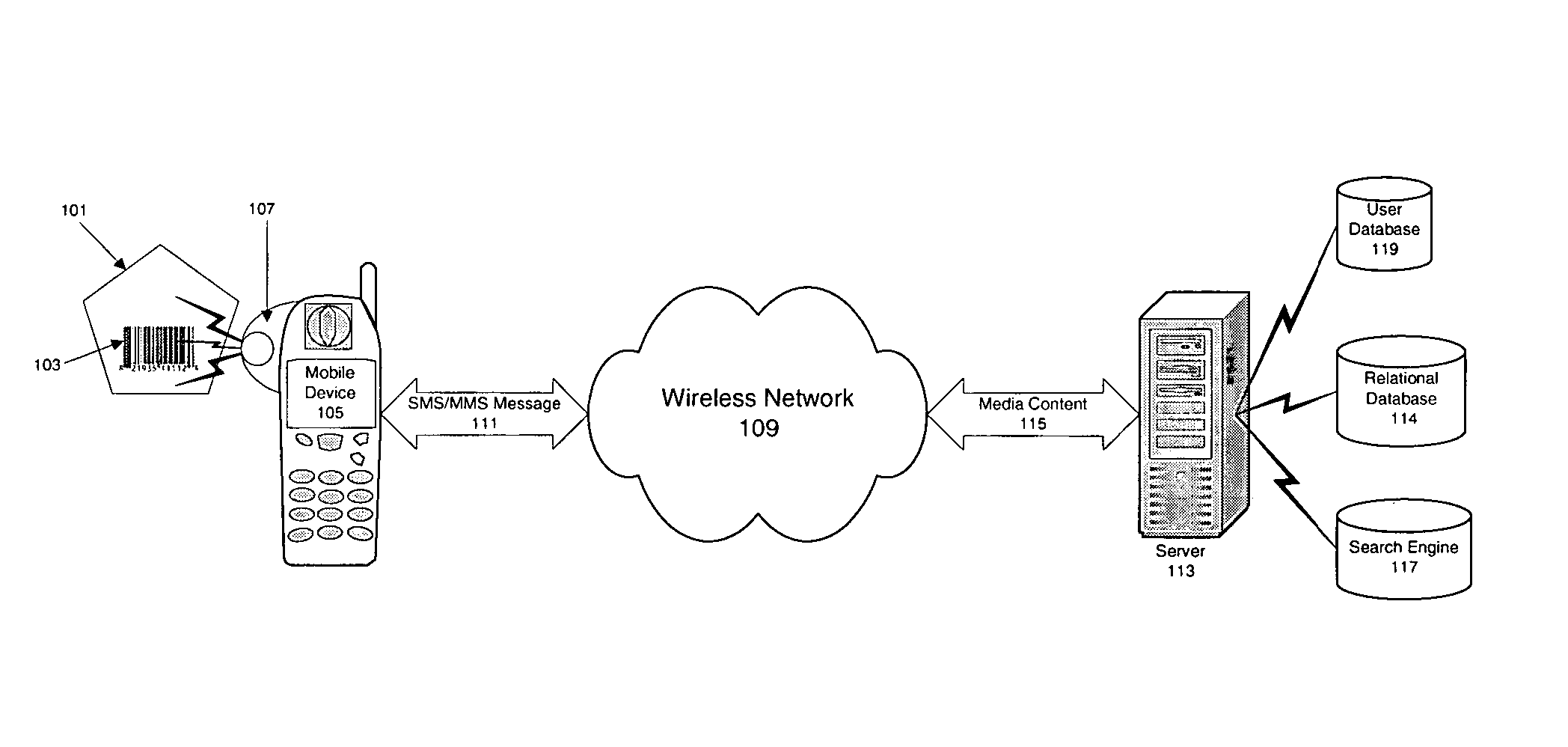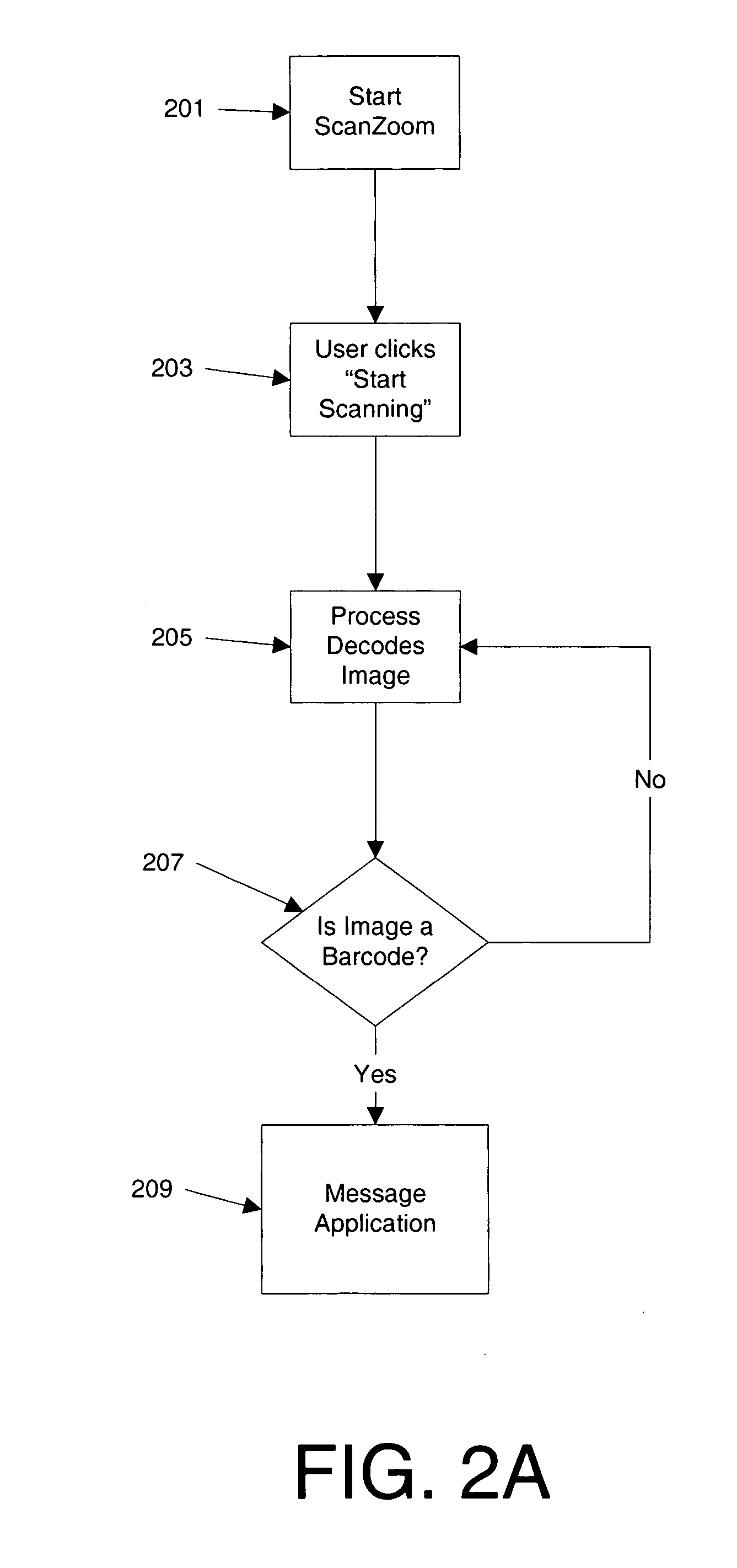System and method for decoding and analyzing barcodes using a mobile device
a mobile device and barcode technology, applied in the field of barcode scanning and decoding using a mobile device, can solve the problems of reducing the number of mobile devices produced for the general public that contain integrated laser-based scanners, affecting device performance, usability or form factor, and reducing the incremental cost per device. , the effect of not adversely affecting the performance of the devi
- Summary
- Abstract
- Description
- Claims
- Application Information
AI Technical Summary
Benefits of technology
Problems solved by technology
Method used
Image
Examples
first embodiment
[0063] Server 113 may process SMS / MMS message 111 in many different ways. In a first embodiment, server 113 may use relational database 114 to pull up product information pertaining to product 101. The server would then forward the product information to mobile device 105 via a SMS / MMS message. If a MMS message is sent to mobile device 105, this may cause a WAP browser loaded on mobile device 105 to be redirected to the appropriate site.
second embodiment
[0064] In a second embodiment, server 113 may process SMS / MMS message 111 by using relational database 114 to pull up product information related to product 101 and then utilize search engine 117 to search for similar products or information pertaining to it. The results of the search would then be sent to mobile device 105 via a SMS / MMS message. As should be evident from these two described embodiments, the barcode information can be utilized in an almost limitless amount of ways.
[0065] To provide additional security, a user of mobile device 105 may be prompted to provide a username and / or password to access server 113. Server 113 would use user database 119 to properly authenticate users. Users not having an account contained in user database 119 would not be granted access to server 113 in any capacity.
[0066] Referring next to FIG. 2A, shown is the process utilized by ScanZoom to acquire and decode barcode 103 once the application has been launched. A user first launches the Sca...
PUM
 Login to View More
Login to View More Abstract
Description
Claims
Application Information
 Login to View More
Login to View More - R&D
- Intellectual Property
- Life Sciences
- Materials
- Tech Scout
- Unparalleled Data Quality
- Higher Quality Content
- 60% Fewer Hallucinations
Browse by: Latest US Patents, China's latest patents, Technical Efficacy Thesaurus, Application Domain, Technology Topic, Popular Technical Reports.
© 2025 PatSnap. All rights reserved.Legal|Privacy policy|Modern Slavery Act Transparency Statement|Sitemap|About US| Contact US: help@patsnap.com



